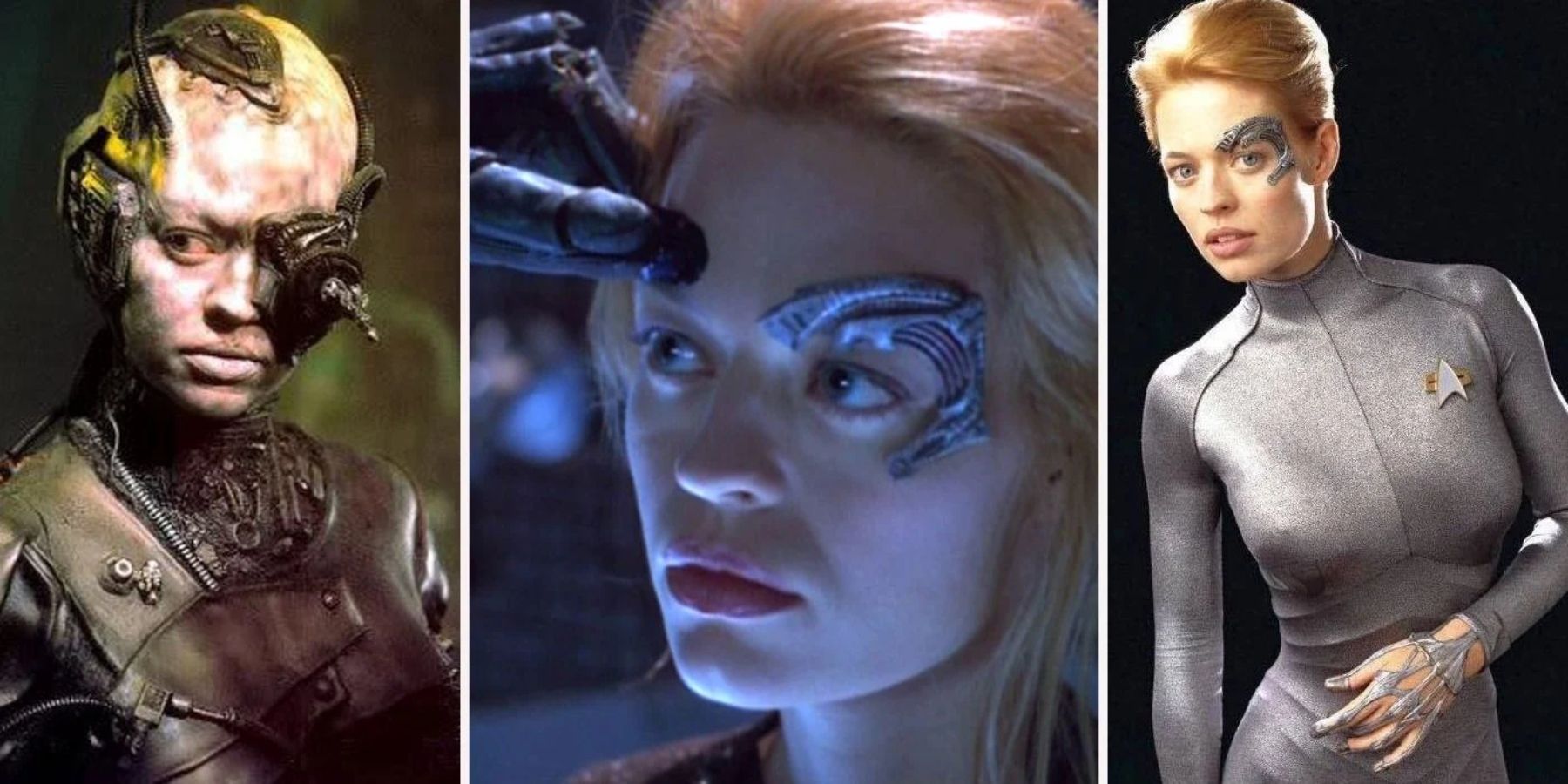Over almost 60 years, Star Trek has been at the forefront of science fiction, setting up themes and genre templates that are still present within modern day iterations in the genre. They produced theoretical sciences that have influenced current day technology, as well as introduced a plethora of alien races. These vary from friend to foe, but quite often they teeter on the edge of the two.
There's the nefarious yet perhaps good Q; the Klingon Empire, who have gone from villains to friends; and let's not forget the incredible yet somewhat creepy Borg. The second season of Picard showed the Borg in a new light, and suggested that perhaps these new Borg might join the federation. But what about ex Borg such as the various rescued in Picard season 1, Picard himself, and the one and only Seven of Nine?
Seven, born Annika Hansen, is an interesting example of ex-Borg reintegration into society. Although she was born human, she is not often referred to as such within the series. While she is often referred to as ex-Borg rather than simply Borg, there is always some level of discomfort around her exact biology, people often still fearing her as if she were still part of the collective. This is explored again in the collective-heavy second season of Picard, with her glee at being able to walk around free of her Borg implants and actually be fully human for once.
It’s easy to forget by looking at the fairly minimal Borg elements present on Seven (most noticeably the implant by her eye, on her cheek, and on her hands), but she is still primarily machinery. Voyager, the series in which she was introduced, makes a point of saying that hardly any of her implants were removed, only the external ones. While the implants are all still there, the majority of them are disabled to avoid her reconnecting to the collective. Again in Picard, it’s revealed that Seven has the highest concentration of Borg technology found within any other freed drone the Federation has encountered. Thus, she is a valuable asset to those seeking to salvage Borg technology.
The difference then between Seven and someone like Picard, who was also assimilated but not referred to still as Borg or ex Borg, is primarily one of duration spent in the collective. Annika was assimilated in the year 2356 at the age of 6 and grew up as Borg, associated closely with the Borg Queen herself. She went through the Borg maturation process, which involved heavy tampering and rewriting of her synaptic pathways and wiping out all sense of humanity or individuality. This is why the holographic doctor from Voyager had such a hard time de-assimilating (for want of a better word) her from the Borg. It was a much greater struggle than it would have been if she had been assimilated later in life, or spent less time as Borg.
Before being disconnected from the collective, Seven spent 18 years as Borg, until being "saved" in the year 2374. During the process of removing as many implants as possible, the doctor managed to prioritize ones which would help lead her back to her subdued humanity, such as removal of her eye implant (despite it purely bring a cosmetic change) and repair of her hair and skin tissue. Despite this, though, there was a large proportion of internal implant that were connected directly to organic functions, the removal or deactivation of which would result in her death. Because of this, she is still forced to "recharge" at Borg recharge stations to keep these implants powered.
Other than this, Voyager's doctor tried his best to approximate a "normal" human being, the only issue being that Seven was never really human. She was biologically, but for only 6 short years. Her humanity was erased before any personality traits or psychological learning had started to develop. This is primarily why she is still more comfortable, in a roundabout way, with being called Borg or ex-Borg rather than human. Especially within Voyager, she really isn’t know what it meant to be human. She had to learn humanity, much like Data, drawing on what little experience she had, all while fighting her natural Borg instincts, rather than other ex Borg who could tap into buried knowledge of past humanity. Seven even keeps her Borg name, appearing more comfortable with it than Annika, as well as predominantly thinking and behaving like a Borg.
To conclude then, Seven is still often considered to be Borg or ex Borg largely due to the severity of her assimilation, but more importantly because of her mindset about it. Even when her "Borg-ness: was greater during her time aboard Voyager, there were crew members such as Captain Janeway and the Doctor who wanted her to regain her humanity, and become fully human. They treated her as such and tried to teach her what that meant. But Seven isn’t human, not really. She was raised a Borg, and that is how she identifies, even once disconnected from the collective. Up until Picard, she never even pretended to be human, choosing, despite its complications, to accept herself as Borg.



